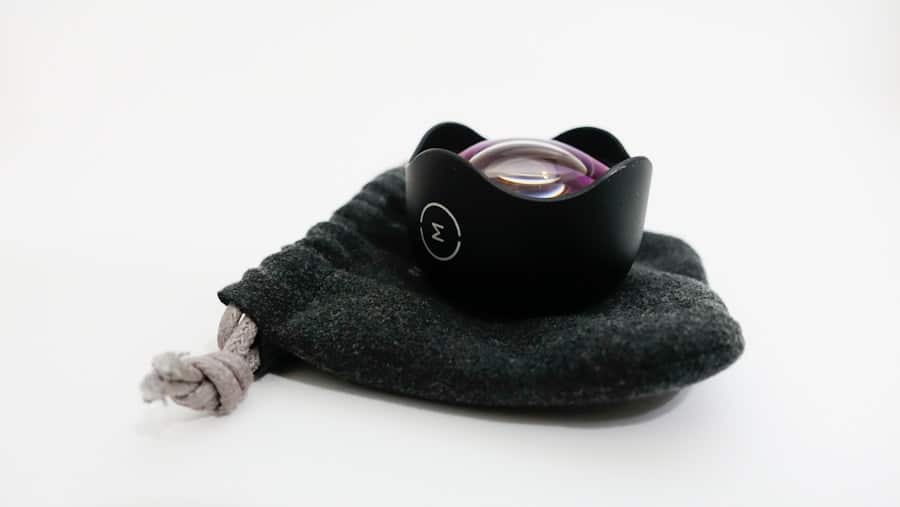Wearable electroencephalograms (EEGs) represent a significant advancement in the field of neurology, merging cutting-edge technology with the need for continuous monitoring of brain activity. Traditionally, EEGs have been confined to clinical settings, where patients are connected to bulky machines that record electrical activity in the brain through a series of electrodes placed on the scalp. This method, while effective, often limits the patient’s mobility and can lead to discomfort, making it challenging to capture data during everyday activities.
The advent of wearable EEG devices has transformed this landscape, allowing for more flexible and patient-centered approaches to neurological assessment. These innovative devices are designed to be lightweight, portable, and user-friendly, enabling individuals to monitor their brain activity in real-time without the constraints of traditional EEG setups. By utilizing advanced materials and miniaturized technology, wearable EEGs can be integrated into headbands, caps, or even clothing, making them accessible for both clinical and personal use.
This shift not only enhances the quality of data collected but also empowers patients to take an active role in their neurological health. As the technology continues to evolve, the potential applications of wearable EEGs are expanding, promising to revolutionize how we understand and manage neurological conditions.
Key Takeaways
- Wearable EEGs are portable devices that can monitor brain activity and are becoming increasingly popular for neurological monitoring.
- Monitoring neurological conditions is crucial for early detection and management of disorders such as epilepsy, stroke, and traumatic brain injury.
- Wearable EEGs work by detecting electrical signals produced by the brain and transmitting the data to a connected device for analysis.
- The advantages of wearable EEGs in monitoring neurological conditions include convenience, continuous monitoring, and potential for early detection of abnormalities.
- Wearable EEGs have applications in various neurological monitoring settings, including clinical diagnosis, research, and at-home monitoring for patients with chronic conditions.
The Importance of Monitoring Neurological Conditions
Continuous Monitoring for Timely Interventions
Continuous monitoring allows healthcare providers to gather comprehensive data on a patient’s condition over time, facilitating timely interventions and adjustments to treatment protocols. This approach enables healthcare professionals to respond promptly to changes in a patient’s condition, leading to more effective management of symptoms and improved patient outcomes.
Enhancing Epilepsy Management with Wearable EEGs
For instance, in epilepsy management, understanding seizure patterns through regular EEG monitoring can lead to more effective medication adjustments and lifestyle recommendations. Wearable EEGs enable patients to record their brain activity during daily routines, providing a more holistic view of their condition. This real-time data can reveal triggers for seizures or other neurological events that might not be evident during a brief clinical assessment.
Proactive Approach to Care
Consequently, continuous monitoring fosters a more proactive approach to care, allowing for early detection of complications and better management of symptoms. By leveraging wearable EEG technology, patients can take a more active role in their care, and healthcare providers can deliver more personalized and effective treatment plans.
How Wearable EEGs Work

Wearable EEGs function by detecting electrical signals produced by neuronal activity in the brain. These devices typically consist of multiple electrodes that are strategically placed on the scalp to capture brain waves. The electrodes convert these electrical signals into digital data, which is then transmitted to a connected device—often a smartphone or tablet—via Bluetooth or Wi-Fi.
The data is processed using sophisticated algorithms that analyze the frequency and amplitude of the brain waves, providing insights into various states of brain activity such as alertness, relaxation, or sleep. The design of wearable EEGs has evolved significantly over recent years. Modern devices often incorporate dry electrodes that eliminate the need for conductive gels or pastes, making them more comfortable and easier to use.
Additionally, many wearable EEGs come equipped with built-in sensors that can monitor other physiological parameters such as heart rate and skin temperature, allowing for a more comprehensive assessment of a patient’s health status. The integration of artificial intelligence and machine learning algorithms further enhances the capabilities of these devices by enabling real-time analysis and personalized feedback based on individual patterns of brain activity.
Advantages of Wearable EEGs in Monitoring Neurological Conditions
The advantages of wearable EEGs in monitoring neurological conditions are manifold. One of the most significant benefits is their ability to provide continuous data collection over extended periods. Unlike traditional EEGs that capture brain activity during a limited timeframe in a controlled environment, wearable devices allow for long-term monitoring in naturalistic settings.
This capability is particularly beneficial for conditions like epilepsy, where seizure frequency and triggers can vary widely from day to day. By capturing data during everyday activities, healthcare providers can gain valuable insights into a patient’s condition that would otherwise remain hidden. Another key advantage is the enhanced patient engagement that wearable EEGs promote.
Patients equipped with these devices can actively participate in their health management by tracking their brain activity and identifying patterns related to their symptoms. This empowerment can lead to improved adherence to treatment plans and lifestyle modifications. Furthermore, many wearable EEGs come with companion apps that provide users with real-time feedback and educational resources about their brain health.
This interactive approach not only fosters a sense of ownership over one’s health but also encourages patients to communicate more effectively with their healthcare providers.
Applications of Wearable EEGs in Neurological Monitoring
Wearable EEGs have a wide range of applications in the monitoring of neurological conditions. One prominent use is in epilepsy management, where these devices can help patients track seizure activity and identify potential triggers. For example, some wearable EEGs are designed to alert users when abnormal brain wave patterns indicative of an impending seizure are detected.
This early warning system can provide patients with critical time to take preventive measures or seek assistance. In addition to epilepsy, wearable EEGs are being explored for their potential in managing other neurological disorders such as sleep disorders and attention deficit hyperactivity disorder (ADHD). For individuals with sleep apnea or insomnia, wearable EEGs can monitor sleep patterns and provide insights into sleep quality and disturbances.
Similarly, for those with ADHD, these devices can help track attention levels and cognitive performance throughout the day, offering valuable data that can inform behavioral interventions and medication adjustments.
Challenges and Limitations of Wearable EEGs

Despite their numerous advantages, wearable EEGs also face several challenges and limitations that must be addressed for widespread adoption. One significant concern is the accuracy and reliability of the data collected by these devices. While advancements in technology have improved signal quality, factors such as movement artifacts and environmental noise can still interfere with readings.
Ensuring that wearable EEGs provide clinically relevant data comparable to traditional systems remains a critical hurdle for developers. Another challenge lies in user compliance and comfort. Although many wearable EEGs are designed for ease of use, some patients may find them uncomfortable or cumbersome during daily activities.
Additionally, there may be a learning curve associated with using these devices effectively, particularly for older adults or those unfamiliar with technology.
Future Developments and Innovations in Wearable EEG Technology
The future of wearable EEG technology holds great promise as researchers and developers continue to innovate in this field. One area of focus is improving the accuracy and reliability of signal acquisition through advanced sensor technologies and machine learning algorithms. By enhancing the ability to filter out noise and artifacts from brain wave data, future wearable EEGs could provide even more precise insights into neurological conditions.
Moreover, there is potential for integrating wearable EEGs with other health monitoring technologies such as smartwatches or fitness trackers. This convergence could lead to comprehensive health monitoring systems that not only track brain activity but also correlate it with physical health metrics like heart rate variability or physical activity levels.
Additionally, advancements in telemedicine may further enhance the utility of wearable EEGs by facilitating remote consultations between patients and healthcare providers. As telehealth becomes increasingly mainstream, integrating real-time data from wearable devices into virtual consultations could enable more personalized care plans tailored to individual patient needs.
The Potential Impact of Wearable EEGs on Neurological Care
The emergence of wearable EEG technology has the potential to transform neurological care significantly. By enabling continuous monitoring outside traditional clinical settings, these devices empower patients while providing healthcare providers with invaluable data for informed decision-making. As technology continues to advance and address current challenges, wearable EEGs could become integral tools in managing various neurological conditions.
The implications extend beyond individual patient care; widespread adoption of wearable EEGs could lead to broader public health benefits by improving our understanding of neurological disorders at a population level. As researchers analyze large datasets collected from diverse populations using these devices, new insights may emerge regarding disease progression, treatment efficacy, and even preventive strategies for at-risk individuals. Ultimately, the integration of wearable EEG technology into everyday life holds great promise for enhancing neurological health outcomes and reshaping how we approach brain health management in the future.
A related article to The Role of Wearable EEGs in Monitoring Neurological Conditions is “How to Choose a Laptop for Graphic Design.” This article discusses the importance of selecting the right laptop for graphic design work, considering factors such as processing power, graphics capabilities, and display quality. To learn more about choosing the best laptop for graphic design, check out this article.
FAQs
What is a wearable EEG?
A wearable EEG (electroencephalogram) is a device that can be worn on the head to monitor and record the electrical activity of the brain. It is non-invasive and can be used outside of a clinical setting.
How does a wearable EEG work?
A wearable EEG works by using electrodes to detect and record the electrical signals produced by the brain. These signals are then transmitted to a device, such as a smartphone or computer, for analysis and interpretation.
What neurological conditions can wearable EEGs monitor?
Wearable EEGs can be used to monitor a variety of neurological conditions, including epilepsy, sleep disorders, brain injuries, and cognitive impairments. They can also be used to track brain activity during tasks and activities.
What are the benefits of using wearable EEGs for monitoring neurological conditions?
Using wearable EEGs for monitoring neurological conditions allows for continuous and real-time monitoring outside of a clinical setting. This can provide valuable data for diagnosis, treatment, and management of neurological conditions.
Are there any limitations to using wearable EEGs for monitoring neurological conditions?
While wearable EEGs offer many benefits, they also have limitations. These may include limited accuracy compared to traditional EEGs, potential discomfort for the wearer, and the need for further research and development in the field.

